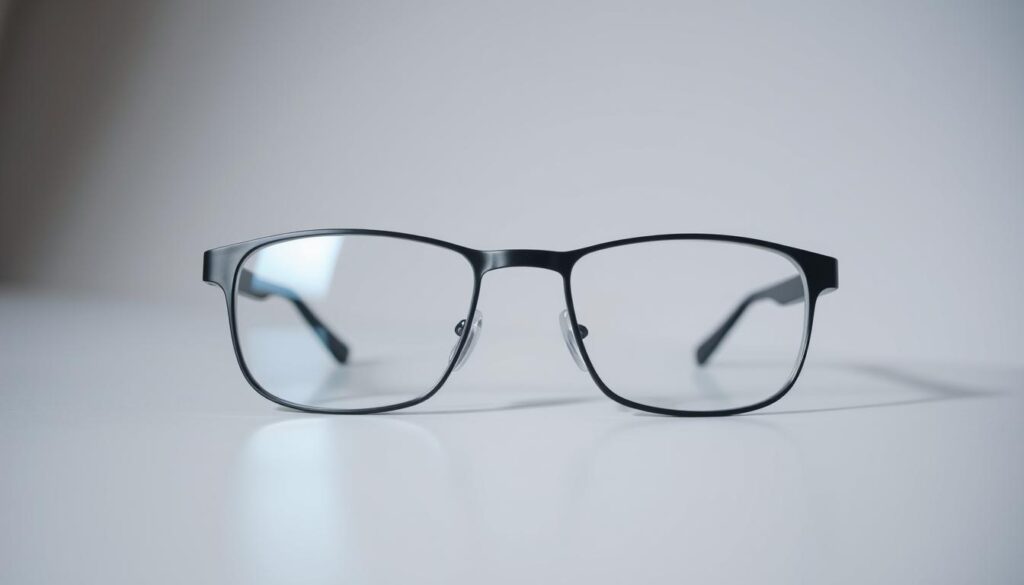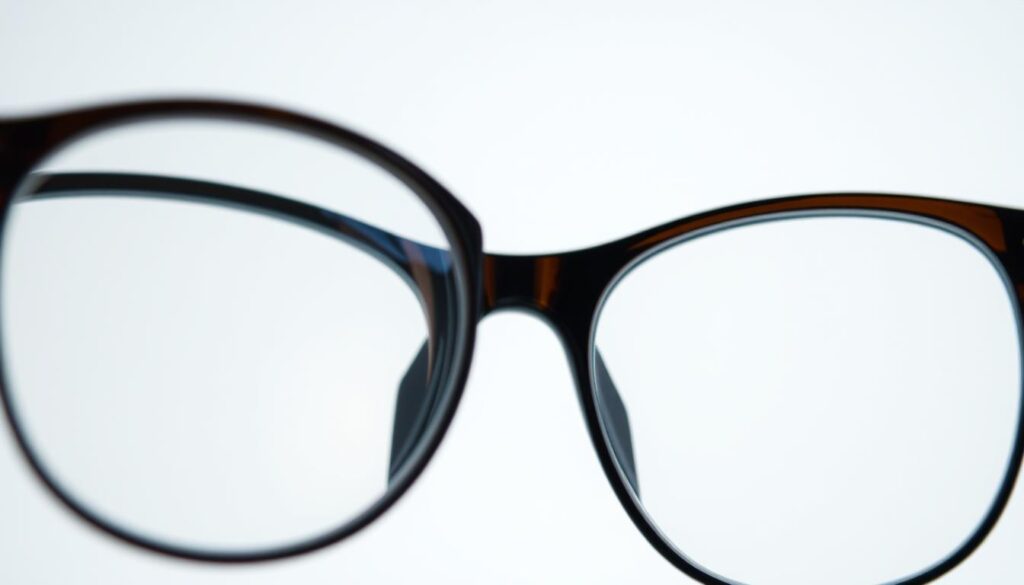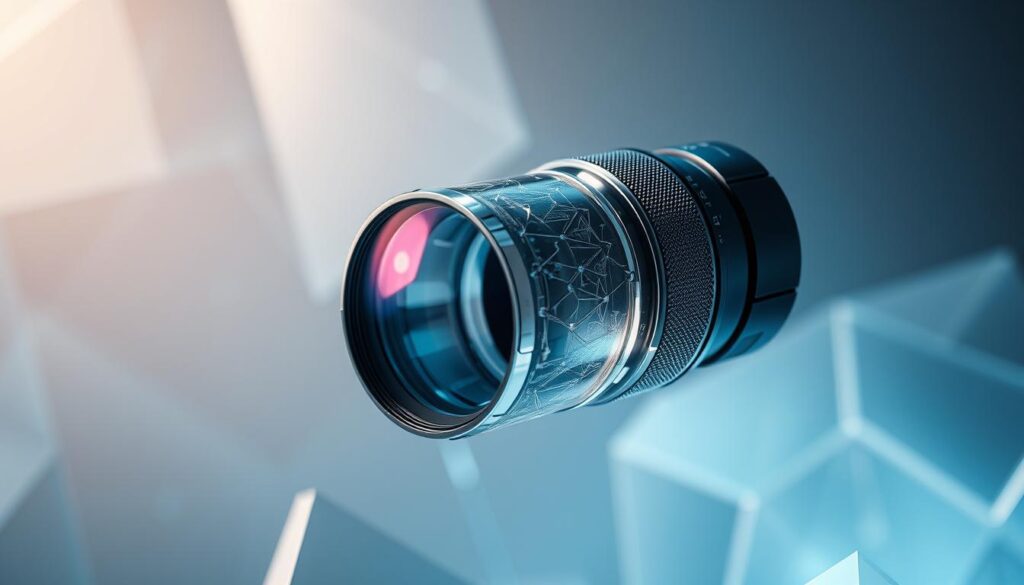Introduction
Have you ever wondered how many ways you can enhance your vision with the right glasses? The world of prescription lenses is vast, offering a wide range of options tailored to your specific needs. Whether you’re dealing with nearsightedness, farsightedness, or something else, there’s a lens designed just for you.
From single vision lenses to multifocal and progressive options, the choices are abundant. Advanced technologies now offer adaptive photochromic lenses that change with the light, ensuring clarity in any setting. Additionally, coatings like anti-reflective and blue light filters can protect your eyes and reduce glare from screens.
Choosing the right lenses isn’t just about correcting your vision; it’s also about style and durability. With options that combine scratch resistance, UV protection, and sleek frames, you can enjoy both functionality and fashion. This guide will dive into the various materials and coatings that enhance lens performance, helping you make an informed decision for your next pair of glasses.
Understanding Your Prescription Needs
Understanding your prescription needs is the cornerstone of achieving clear and comfortable vision. A prescription is more than just numbers; it’s a detailed guide tailored to your specific vision requirements. Whether you’re dealing with nearsightedness, farsightedness, or astigmatism, your prescription serves as a roadmap for selecting the right lenses.
Assessing Your Vision Requirements
Assessing your vision requirements is the first step in choosing the right lens type. This process involves both subjective testing, where you describe what you see, and objective measurements, like refraction tests. Together, these methods provide a comprehensive view of your vision needs.
| Lens Type | Features | Best Use | Suitability |
|---|---|---|---|
| Single Vision | Corrects nearsightedness or farsightedness | Distance vision | All ages |
| Multifocal | Multiple focal points | Seeing at varying distances | Presbyopia |
| Progressive | Seamless transition between distances | Advanced vision correction | Active lifestyles |

Consulting with Your Optometrist
Consulting with an optometrist ensures your lenses are tailored to your specific needs. They consider factors like your lifestyle, screen time, and eye conditions to recommend the best options. Discussing these aspects helps in selecting glasses that meet your daily needs and preferences.
Regular eye exams are crucial for accurate prescriptions, reducing eye strain and improving eye health. By understanding your vision requirements, you can make informed decisions about your lenses, ensuring clarity and comfort in every situation.
Exploring a Range of Glasses Lens Options
When it comes to enhancing your vision, the variety of lens options available today is remarkable. Whether you’re addressing nearsightedness, farsightedness, or astigmatism, there’s a lens designed to meet your needs. From single vision to progressive lenses, each type offers unique benefits tailored to different lifestyles and vision requirements.
Key Features of Each Lens Type
Single vision lenses are ideal for correcting nearsightedness or farsightedness, offering clear distance vision. Multifocal lenses, on the other hand, provide multiple focal points, making them suitable for those who need to switch between near and far vision frequently. Progressive lenses take this a step further by offering a seamless transition between distances, catering to active lifestyles.
| Lens Type | Features | Best Use |
|---|---|---|
| Single Vision | Corrects nearsightedness or farsightedness | Distance vision |
| Multifocal | Multiple focal points | Seeing at varying distances |
| Progressive | Seamless transition between distances | Advanced vision correction |
Benefits of Advanced Vision Correction
Advanced lens coatings, such as blue light filters and anti-reflective coatings, reduce glare and eye strain, especially during screen time. Photochromic lenses adapt to light conditions, providing UV protection and clarity in any setting. These technologies not only enhance vision but also protect your eyes, making them a valuable investment for long-term eye health.

Exploring the range of glasses lens options allows you to find the perfect balance between functionality and style. Whether you prioritize clarity, durability, or convenience, there’s a lens solution designed to enhance your vision and fit your lifestyle.
Eye Glasses Lens Options For Different Vision Needs
Choosing the right lens type is essential for addressing specific vision challenges. Whether you need correction for nearsightedness, farsightedness, or presbyopia, there are tailored solutions available.
Single Vision and Multifocal Lenses
Single vision lenses are designed for correcting nearsightedness or farsightedness. They provide clear vision at a single distance, making them ideal for individuals with straightforward prescriptions. On the other hand, multifocal lenses offer multiple focal points, catering to those who need to switch between near and far vision frequently.
Progressive, Bifocal, and Trifocal Solutions
Progressive lenses stand out with their seamless transition between distances, ideal for active lifestyles. Bifocal lenses have two distinct segments for near and far vision, while trifocal lenses add an intermediate segment, addressing three distances. Each option is suited for different needs and preferences.
- Bifocal lenses: Two segments for near and far vision.
- Trifocal lenses: Three segments for near, intermediate, and far vision.

Exploring these options helps in selecting the most comfortable and effective solution, ensuring optimal visual clarity and reducing eye strain.
Advanced Lens Technologies for Enhanced Vision
Modern advancements in lens technology have revolutionized how we correct and protect our vision. These innovations cater to various needs, from reducing eye strain during screen time to adapting to changing light conditions. Let’s explore two groundbreaking technologies: blue light filter lenses and photochromic lenses.
Digital and Blue Light Filter Lenses
Digital lenses with blue light filters are designed to address the challenges of our screen-dominated world. These lenses reduce exposure to blue light emitted by computers, smartphones, and other digital devices, which is known to cause eye strain and fatigue. By incorporating this technology, individuals can enjoy clearer vision and greater comfort during prolonged screen time.
Photochromic and Adaptive Lenses
Photochromic lenses offer a dynamic solution for changing environments. These lenses darken in sunlight and clear indoors, providing seamless UV protection and reducing the need for separate sunglasses. Adaptive lenses, such as Transitions® Gen8™, enhance this functionality by adjusting more quickly and precisely to varying light conditions, ensuring optimal vision and comfort throughout the day.
| Feature | Traditional Lenses | Modern Adaptive Lenses |
|---|---|---|
| Light Adaptation | Static tints | Dynamic, automatic adjustment |
| UV Protection | Variable | Full protection |
| Glare Reduction | Basic | Advanced with anti-reflective coatings |
These advanced lens technologies not only enhance vision clarity but also offer practical benefits like reduced eye strain and long-term eye health protection. Whether you’re working on a computer or enjoying the outdoors, there’s a lens technology designed to meet your needs, making them a significant step forward in personalized eyewear solutions.

Materials That Define Lens Performance
When selecting the perfect glasses, the material of your lenses plays a crucial role in both functionality and comfort. Modern options like plastic, polycarbonate, and high-index materials offer distinct advantages over traditional glass lenses.
Comparing Plastic, Polycarbonate, and Glass Lenses
Plastic lenses are lightweight and offer good optical clarity, making them a popular choice for everyday wear. Polycarbonate lenses, known for their impact resistance, are ideal for active lifestyles and provide excellent UV protection. Glass lenses, while offering superior optical clarity, are heavier and less durable compared to modern alternatives.
| Material | Weight | Durability | Optical Clarity |
|---|---|---|---|
| Plastic | Light | Good | High |
| Polycarbonate | Very Light | Excellent | High |
| Glass | Heavy | Fair | Excellent |
Modern materials like polycarbonate are thinner and more durable, reducing eye strain and providing better protection. They also integrate well with coatings like anti-reflective and blue light filters, enhancing overall performance and comfort.
Enhancing Vision with Lens Coatings and Add-Ons
Lens coatings and add-ons play a vital role in enhancing vision and protecting your eyes. These specialized treatments can improve optical performance, reduce glare, and prolong the life of your lenses. Whether you’re looking for better clarity during screen time or protection from harmful UV rays, there’s a coating designed to meet your needs.
Anti-Reflective, Scratch-Resistant, and UV Coatings
Anti-reflective coatings are essential for minimizing glare, especially in environments with heavy screen use. By reducing reflections, these coatings enhance clarity and reduce eye strain. Scratch-resistant treatments add durability to your lenses, protecting them from everyday wear and tear. UV coatings, on the other hand, shield your eyes from harmful ultraviolet rays, providing essential protection during outdoor activities.
Additional Options: Tinted and Polarised Lenses
Tinted lenses offer a stylish way to reduce glare and improve visual comfort in bright conditions. Polarised lenses take this a step further by eliminating reflected glare, making them ideal for activities like driving or fishing. These options not only enhance vision but also add a personal touch to your eyewear.
| Coating Type | Features | Best Use |
|---|---|---|
| Anti-Reflective | Reduces glare, improves clarity | Screen-intensive environments |
| Scratch-Resistant | Prolongs lens life | Active lifestyles |
| UV Protection | Blocks harmful UV rays | Outdoor activities |
| Tinted | Reduces glare | Bright conditions |
| Polarised | Eliminates reflected glare | Driving, water sports |
Professional lens coatings are applied during manufacturing to ensure optimal performance. These treatments not only improve vision clarity but also protect your eyes from strain and harmful light. By selecting the right add-ons, you can enhance both the functionality and appearance of your glasses, making them a vital component of modern eyewear technology.
Customizing Lenses for Your Lifestyle
Your daily activities and habits play a significant role in determining the ideal lens type for your glasses. Whether you spend most of your time in front of a computer or enjoy outdoor adventures, there are lens options designed to meet your unique needs.
Choosing Lenses Based on Daily Screen Time and Activity
If you’re someone who spends a lot of time on computers or smartphones, lenses with blue light filtering properties can help reduce eye strain. These lenses are specifically designed to minimize the impact of prolonged screen time, ensuring clearer vision and greater comfort throughout the day.
For those with active lifestyles, durable materials like polycarbonate or Trivex® are excellent choices. These materials are lightweight, impact-resistant, and provide superior UV protection, making them ideal for outdoor activities. Additionally, anti-reflective coatings can enhance visibility by reducing glare from screens or sunlight.
Your prescription needs and lifestyle preferences should guide your selection between single vision, multifocal, or progressive lenses. Each type offers distinct benefits, from addressing presbyopia to providing seamless transitions between near and far vision.
Personalized consultations with an optometrist can help determine the best lens type and coatings for your daily routine. Factors such as frame compatibility and lens material are also crucial considerations to ensure a perfect fit and optimal performance. Advanced coatings like photochromic lenses can adapt to changing light conditions, offering convenience and protection in various environments.
By customizing your lenses to your lifestyle, you can enjoy enhanced vision clarity, reduced eye strain, and long-term eye health protection. Whether you’re working on a computer or exploring the outdoors, tailored eyewear solutions ensure your glasses meet both your vision needs and lifestyle demands.
Best Practices for Lens Care and Maintenance
Proper lens care is essential to maintain clear vision and extend the life of your glasses. Whether you wear single vision, progressive, or multifocal lenses, regular maintenance ensures optimal performance and protects your investment.
Effective Cleaning Techniques
To keep your lenses clean and clear, use mild soap and warm water. Gently rub the surface with a microfiber cloth to avoid scratches. Avoid using paper towels or tissues, as they can leave lint or scratches. For tougher smudges, consider specialized cleaning solutions recommended by eye care professionals.
Tips for Prolonging Lens Life
Regular maintenance is key to preventing scratches and preserving coatings. Store your glasses in a protective case when not in use to avoid accidental damage. Avoid exposing your lenses to harsh chemicals, and never clean them with abrasive materials like household cleaners or rough cloths.
| Care Tip | Best Practice | Benefit |
|---|---|---|
| Daily Cleaning | Use mild soap and microfiber cloth | Prevents smudges and scratches |
| Storage | Keep in a protective case | Protects against damage |
| Avoid Harsh Chemicals | Use recommended solutions | Preserves lens coatings |
By following these care tips, you can enjoy clear vision and extend the life of your glasses. Regular maintenance not only protects your lenses but also ensures your eyes remain comfortable and strain-free.
The Role of Innovative Lenses in Modern Eyewear
Innovative lens technologies are reshaping the world of eyewear, offering tailored solutions for unique vision needs. These advanced designs cater to both functional and aesthetic preferences, ensuring sharper vision and enhanced comfort.
Specialized Options: Prism and High-Index Lenses
Prism lenses are designed to correct double vision by aligning images seen by each eye. This innovative solution enhances binocular coordination, providing clearer and more comfortable vision for individuals with specific eye conditions.
High-index lenses offer a thinner and lighter alternative for stronger prescriptions. Made from advanced materials, these lenses reduce bulk while maintaining clarity, making them ideal for those seeking a more discreet option.
| Feature | Traditional Lenses | Innovative Lenses |
|---|---|---|
| Material | Standard plastic or glass | High-index, polycarbonate |
| Thickness | Thicker, heavier | Thinner, lighter |
| Optical Clarity | Good | Excellent |
These cutting-edge lenses not only improve vision but also reduce eye strain, making them perfect for long hours of wear. Whether for correcting double vision or providing a sleeker profile, innovative lenses offer a superior eyewear experience.
Conclusion
In conclusion, the world of prescription lenses offers a wide array of choices designed to enhance your vision and meet diverse needs. Understanding your prescription and lifestyle is key to selecting the right lens type, material, and coatings, ensuring both comfort and functionality.
Advanced technologies like blue light filtering and photochromic lenses provide significant benefits, reducing eye strain and adapting to different environments. Proper care and maintenance are crucial for preserving lens clarity and longevity, while consultations with eye care professionals ensure personalized solutions tailored to unique vision conditions.
From single vision to multifocal lenses, each option offers specific advantages in clarity and comfort. Enhanced coatings, such as anti-reflective and scratch-resistant treatments, further prolong lens life and performance. The integration of advanced materials and technologies leads to superior eyewear performance and overall eye health.
Consulting with professionals is essential to determine the best choice for your vision needs. With the right combination of lenses and coatings, you can enjoy enhanced vision clarity, reduced eye strain, and long-term eye health protection. This comprehensive approach ensures your glasses meet both your vision needs and lifestyle demands, leaving you well-informed and confident in making an optimal eyewear decision.
